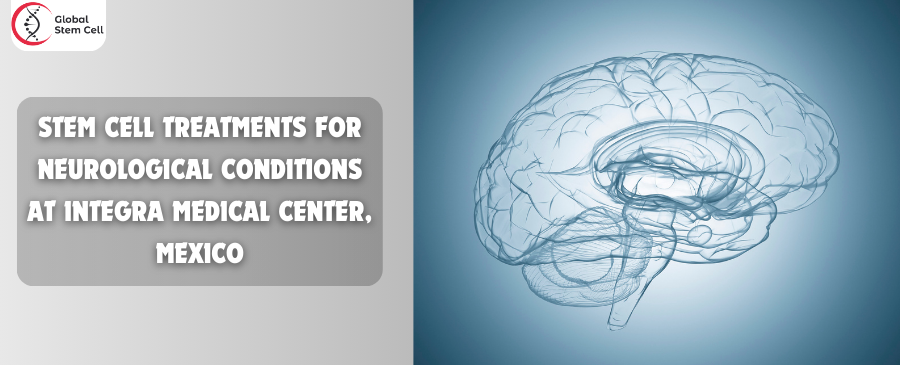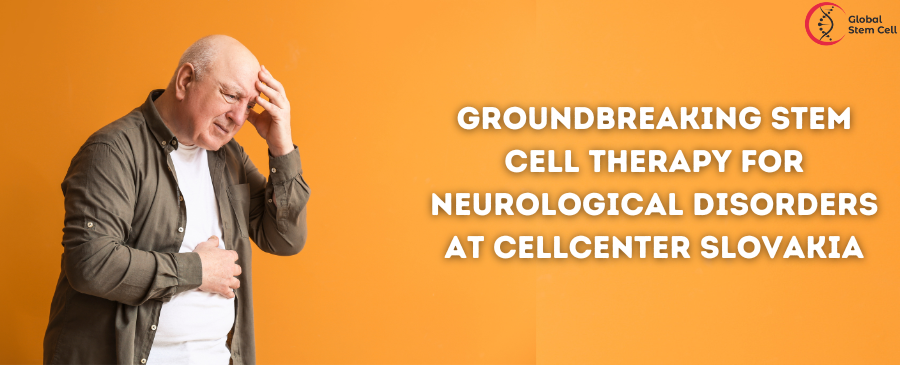
The Science Behind Stem Cell Therapy for Autism?
Table of Content
Autism spectrum disorder (ASD) affects millions of people worldwide, and its prevalence has been steadily increasing. In recent years, stem cell therapy has emerged as a potential treatment for autism, offering hope to many families. In this article, we’ll explore the science behind this cutting-edge therapy and delve into how it works for autism specifically.
The first thing comes in mind while thinking about treatment of Autism is How Does Stem Cell Therapy Work for Autism? The science behind stem cell therapy for autism focuses on using stem cells to treat the underlying neurological abnormalities associated with the disorder. Autism Spectrum Disorder (ASD) is characterized by deficits in communication, social interactions, and behavior. Although the exact cause of ASD remains unknown, research suggests that it involves a complex interplay of genetic and environmental factors that can lead to structural and functional abnormalities in the brain.
Stem cell therapy for autism aims to address these abnormalities by leveraging the unique properties of stem cells, which can differentiate into various cell types and secrete factors that promote repair, regeneration, and restoration of function.
What is Autism Spectrum Disorder (ASD)?
Autism Spectrum Disorder (ASD) is a complex neurodevelopmental disorder that affects how individuals communicate, interact, and perceive the world around them. The term “spectrum” indicates that the symptoms and severity of the disorder can vary widely from person to person. ASD is usually diagnosed in early childhood, and its symptoms often persist throughout a person’s life.
Symptoms of ASD typically include:
- Difficulties with social interactions: Individuals with ASD might struggle with understanding social cues, making eye contact, or forming and maintaining relationships.
- Communication challenges: People with ASD may have difficulty with verbal and nonverbal communication, including understanding and using language, gestures, and facial expressions.
- Repetitive behaviors and restricted interests: Individuals with ASD often exhibit repetitive behaviors, such as hand flapping or rocking, and may have intense, focused interests in specific subjects or activities.
The exact cause of ASD is still unknown, but research suggests a combination of genetic and environmental factors may contribute to its development. Early intervention and tailored support can significantly improve outcomes for individuals with ASD, helping them lead more independent and fulfilling lives.
ASD Prevalence and Impact
- According to the Centers for Disease Control and Prevention (CDC), 1 in 54 children is diagnosed with ASD
- Boys are four times more likely to be diagnosed with ASD than girls
- ASD can significantly impact an individual’s quality of life, as well as their family’s well-being
The Basics of Stem Cells
Stem cells are unique, unspecialized cells in the body that possess the remarkable ability to self-renew and differentiate into various cell types. They play a crucial role in the body’s repair and regeneration processes, as they can replace damaged or dysfunctional cells and restore normal function in tissues and organs.
There are two main types of stem cells:
- Embryonic Stem Cells (ESCs): These cells are derived from early-stage embryos, typically at the blastocyst stage (about 4-5 days after fertilization). ESCs are pluripotent, meaning they have the potential to differentiate into any cell type in the body, making them a valuable resource for research and regenerative medicine.
- Adult Stem Cells (ASCs): Also known as somatic stem cells, these cells are found in various tissues throughout the body, including bone marrow, adipose tissue, and the brain. Adult stem cells are multipotent, meaning they have a more limited ability to differentiate, usually only into the cell types found in the tissue from which they were derived. However, adult stem cells play a critical role in the body’s natural repair and maintenance processes.
Stem cell research and therapy have gained significant attention over the past few decades due to their potential in treating various diseases and conditions, including neurological disorders, heart disease, diabetes, and injuries. Researchers continue to explore the mechanisms underlying stem cell differentiation, their potential applications in regenerative medicine, and the ethical considerations surrounding their use.
An Overview of How Does Stem Cell Therapy Work for Autism
Stem cell therapy has emerged as a promising approach to treat various neurological disorders, including autism. Autism Spectrum Disorder (ASD) is a complex neurodevelopmental condition that affects communication, social interactions, and behavior. Stem cell therapy for autism aims to address the underlying neurological causes of the disorder and improve overall brain function.
The therapy involves the transplantation of stem cells into the patient’s body. These stem cells can replace damaged or dysfunctional cells, promote repair, and restore normal function in the affected areas of the brain. Additionally, the transplanted stem cells can release growth factors and anti-inflammatory molecules, which may help improve the brain’s overall health and function.
Key points about How Does Stem Cell Therapy Work for Autism:
- The therapy aims to address the neurological abnormalities that contribute to the symptoms of ASD
- Stem cell therapy has shown promising results in preclinical studies and early clinical trials, with some patients experiencing improvements in communication, social interaction, and behavior
- More research is needed to fully understand the safety, efficacy, and optimal dosage of stem cell therapy for autism
- It is essential to note that stem cell therapy for autism is still in the experimental phase, and more extensive clinical trials are required before it can be considered a standard treatment option.
However, the initial results are encouraging, and ongoing research continues to expand our understanding of the potential benefits and mechanisms of stem cell therapy for individuals with ASD.
How Stem Cell Therapy Targets Autism
Stem cell therapy targets autism by addressing various aspects of the disorder at a cellular and molecular level. The transplanted stem cells can interact with the autistic brain’s environment, promoting repair and restoration of normal function in the affected areas. The potential mechanisms through which stem cell therapy targets autism include:
- Reducing inflammation: Neuroinflammation is thought to be one of the contributing factors in the development of autism. Stem cells, particularly mesenchymal stem cells (MSCs), have anti-inflammatory properties that may help reduce inflammation in the autistic brain. By modulating the immune response and releasing anti-inflammatory molecules, stem cells can help create a more favorable environment for brain repair and regeneration.
- Promoting neural regeneration: Stem cells have the ability to differentiate into various types of brain cells, including neurons and glial cells. This property allows them to potentially replace damaged or lost cells in the autistic brain, leading to neural regeneration and improved brain function. Additionally, stem cells secrete growth factors that promote cell survival, proliferation, and differentiation, further supporting the regeneration process.
- Enhancing synaptic connections: Synapses are the junctions between neurons that facilitate communication within the brain. Individuals with autism often have synaptic dysfunction, which can impair communication between brain cells and contribute to the disorder’s symptoms. Stem cells may release factors that promote the formation, maturation, and function of synapses, leading to improved neuronal communication and overall brain function.
These mechanisms work together to create a more supportive environment for the autistic brain, promoting repair, regeneration, and restoration of function. It is important to note that research in this area is still ongoing, and our understanding of how stem cell therapy targets autism is continually evolving. However, the potential benefits of stem cell therapy for individuals with ASD are promising, and further research will help refine the therapy and uncover additional mechanisms of action.
Types of Stem Cells Used in Autism Treatment
Several types of stem cells have been investigated for their potential use in autism treatment. Some of the most common ones include:
- Mesenchymal Stem Cells (MSCs): These cells are found in various tissues, including bone marrow, adipose tissue, and umbilical cord blood. MSCs have been the most widely studied for their potential in autism therapy due to their anti-inflammatory properties and ability to secrete various growth factors.
- Neural Stem Cells (NSCs): These cells can differentiate into various types of brain cells, making them a promising candidate for treating neurological disorders like autism.
- Induced Pluripotent Stem Cells (iPSCs): iPSCs are adult cells that have been reprogrammed to behave like embryonic stem cells. They offer a potential source of patient-specific stem cells for treatment.
The Future of Stem Cell Therapy for Autism
The future of stem cell therapy for autism is promising, as research in this area continues to advance rapidly. With ongoing studies and clinical trials, our understanding of the underlying mechanisms, safety, efficacy, and best practices for stem cell therapy in treating autism will improve. Some key developments to watch for in the future of stem cell therapy for autism include:
- Ongoing clinical trials: More clinical trials will help establish the safety, efficacy, and optimal dosages of stem cell therapy for autism. As more data becomes available from these trials, researchers and clinicians will be better equipped to determine the best treatment protocols and identify which patients are most likely to benefit from the therapy.
- Advances in stem cell technology: As stem cell research progresses, new technologies and methods, such as gene editing and cell reprogramming, will become available. These advances will allow researchers to generate more specific and personalized stem cell therapies, which could lead to improved outcomes for individuals with autism.
- Greater understanding of the biological mechanisms underlying autism: As our understanding of autism’s underlying biology improves, researchers will be better positioned to develop targeted stem cell therapies that address specific aspects of the disorder. This knowledge could also help identify new therapeutic targets and strategies for stem cell therapy in autism.
- Collaboration between researchers, clinicians, and patient advocacy groups: The future of stem cell therapy for autism will depend on the collaboration between various stakeholders, including researchers, clinicians, patients, and their families. By working together, these groups can help drive research forward, ensure that patient needs are met, and promote the responsible development and implementation of stem cell therapies for autism.
While stem cell therapy for autism is still in the experimental phase, the potential benefits and the progress made thus far are encouraging. As research continues to advance, there is hope that stem cell therapy will become a more effective and accessible treatment option for individuals with autism, significantly improving their quality of life and that of their families.
Addressing Ethical Concerns and Challenges
Stem cell therapy for autism, like any emerging medical treatment, faces several ethical concerns and challenges that must be addressed to ensure responsible development and implementation. Some of the main issues include:
- Safety and efficacy: Before stem cell therapy can become a widely accepted treatment for autism, more research is needed to determine its long-term safety and efficacy. This involves conducting well-designed clinical trials to assess potential risks, side effects, and benefits. Ensuring the safety and well-being of patients should always be a top priority when exploring new treatment options.
- Access and cost: As with many cutting-edge therapies, stem cell treatments can be expensive and may not be covered by insurance, making it difficult for many families to access. There is a need to address issues of affordability and equitable access to ensure that all individuals who could potentially benefit from stem cell therapy have the opportunity to do so.
- Ethical concerns related to stem cell sources: The use of embryonic stem cells (ESCs) has long been a source of ethical debate due to the destruction of embryos to obtain these cells. While alternative sources of stem cells, such as adult stem cells and induced pluripotent stem cells (iPSCs), can circumvent some of these ethical concerns, it is essential to continue exploring and discussing the ethical implications of using various stem cell sources.
- Informed consent and patient autonomy: Patients and their families must be provided with clear, accurate, and up-to-date information about stem cell therapy for autism, including potential risks, benefits, and alternatives. Ensuring that patients and their caregivers can make informed decisions about treatment options is a crucial ethical consideration.
- Regulation and oversight: As stem cell therapy for autism continues to develop, there is a need for clear regulations and oversight to ensure that treatments are safe, effective, and based on sound scientific evidence. This includes monitoring unregulated clinics that may offer unproven or unsafe stem cell therapies, which can pose significant risks to patients.
Addressing these ethical concerns and challenges is essential to the responsible development and implementation of stem cell therapy for autism. By fostering open and transparent dialogue among researchers, clinicians, patients, and policymakers, we can work towards ensuring that stem cell therapy is developed and used ethically and in the best interest of individuals with autism and their families.






